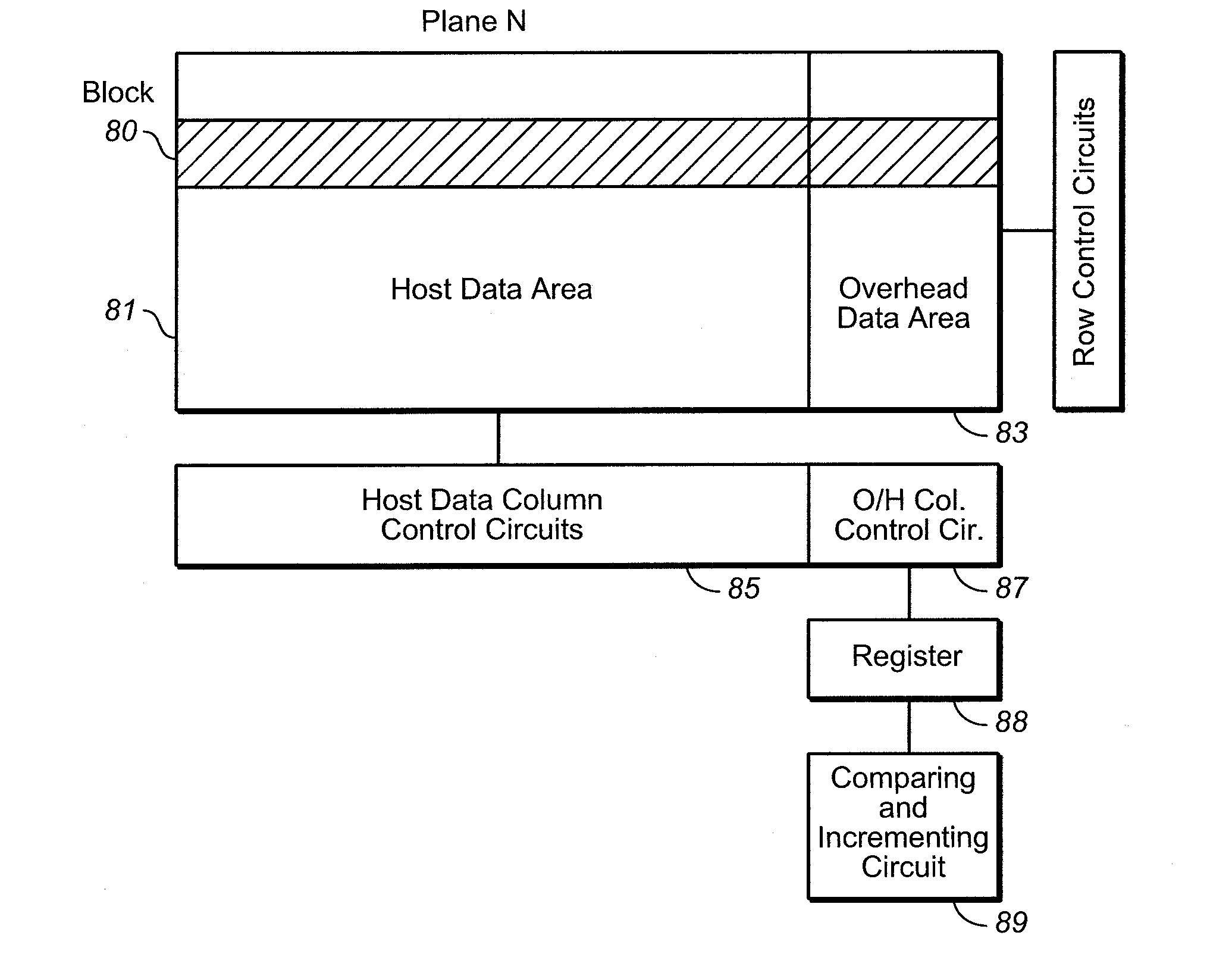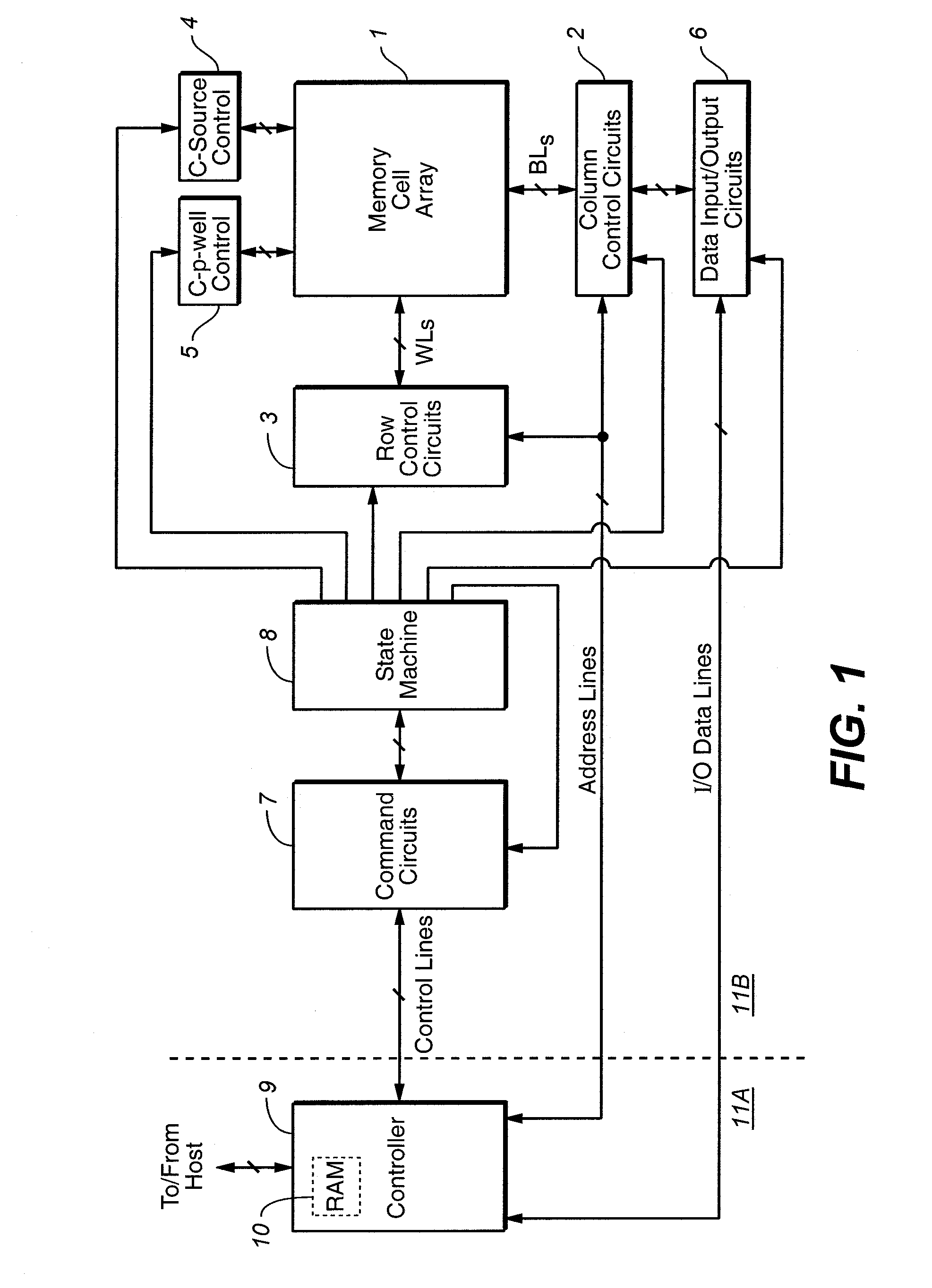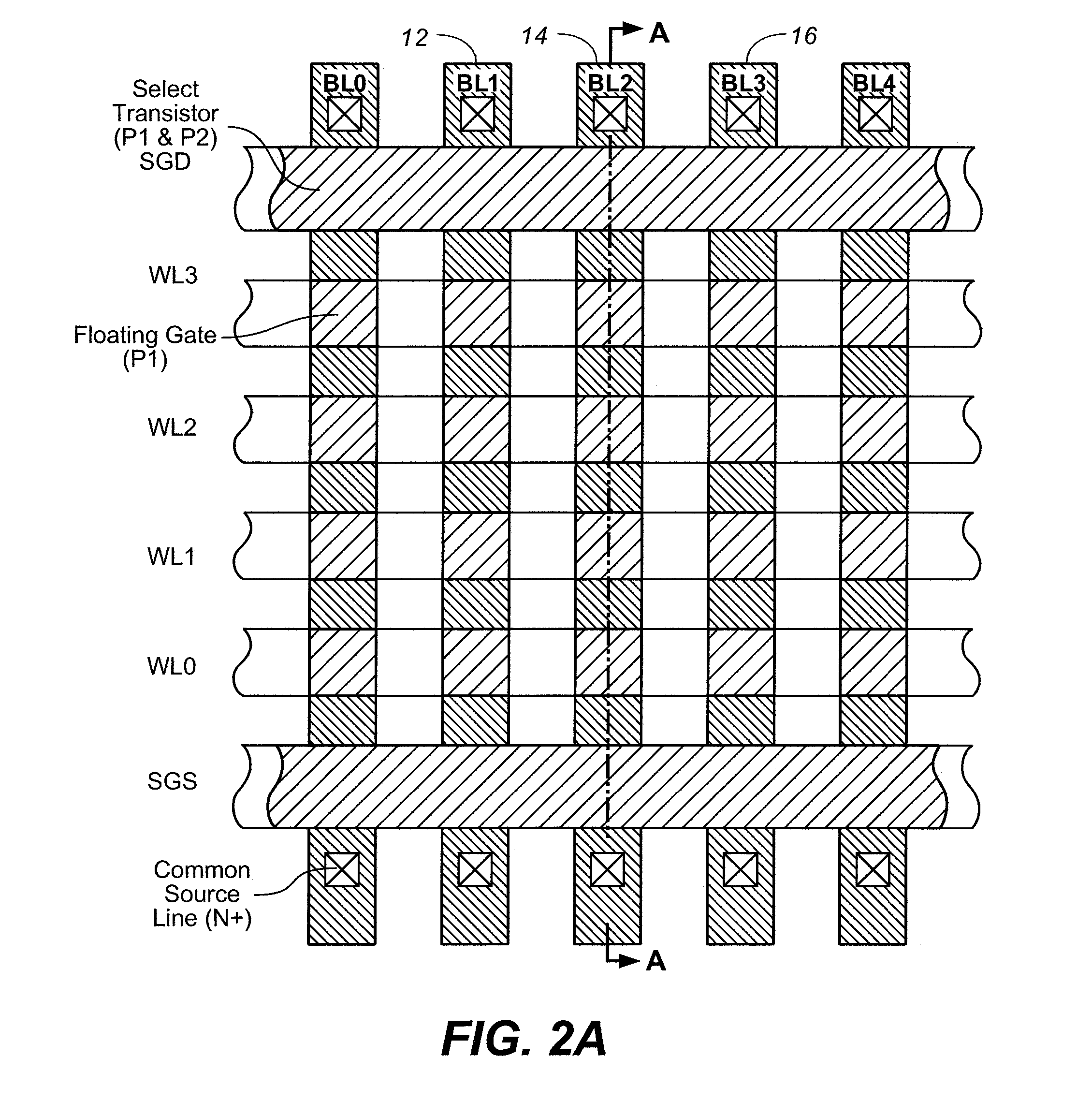Cycle count storage systems
a storage system and cycle count technology, applied in the field of nonvolatile memory systems, can solve the problems of less than the optimal wear leveling, erroneous data to be read, and the storage level shifts, and achieves the effect of low corruption risk and high degree of reliability
- Summary
- Abstract
- Description
- Claims
- Application Information
AI Technical Summary
Benefits of technology
Problems solved by technology
Method used
Image
Examples
Embodiment Construction
[0033]An exemplary memory system in which the various aspects of the present invention may be implemented is illustrated by the block diagram of FIG. 1. A memory cell array 1 including a plurality of memory cells arranged in a matrix is controlled by column control circuits 2, row control circuits 3, a c-source control circuit 4 and a c-p-well control circuit 5. The memory cell array 1 is, in this example, of the NAND type that is described above in the Background and in references incorporated herein by reference. Other types of nonvolatile memory may also be used. Column control circuits 2 are connected to bit lines (BL) of the memory cell array 1 for reading data stored in the memory cells, for determining a state of the memory cells during a program operation, and for controlling potential levels of the bit lines (BL) to promote the programming or to inhibit the programming. Row control circuits 3 are connected to word lines (WL) to select one of the word lines (WL), to apply re...
PUM
 Login to View More
Login to View More Abstract
Description
Claims
Application Information
 Login to View More
Login to View More - R&D
- Intellectual Property
- Life Sciences
- Materials
- Tech Scout
- Unparalleled Data Quality
- Higher Quality Content
- 60% Fewer Hallucinations
Browse by: Latest US Patents, China's latest patents, Technical Efficacy Thesaurus, Application Domain, Technology Topic, Popular Technical Reports.
© 2025 PatSnap. All rights reserved.Legal|Privacy policy|Modern Slavery Act Transparency Statement|Sitemap|About US| Contact US: help@patsnap.com



